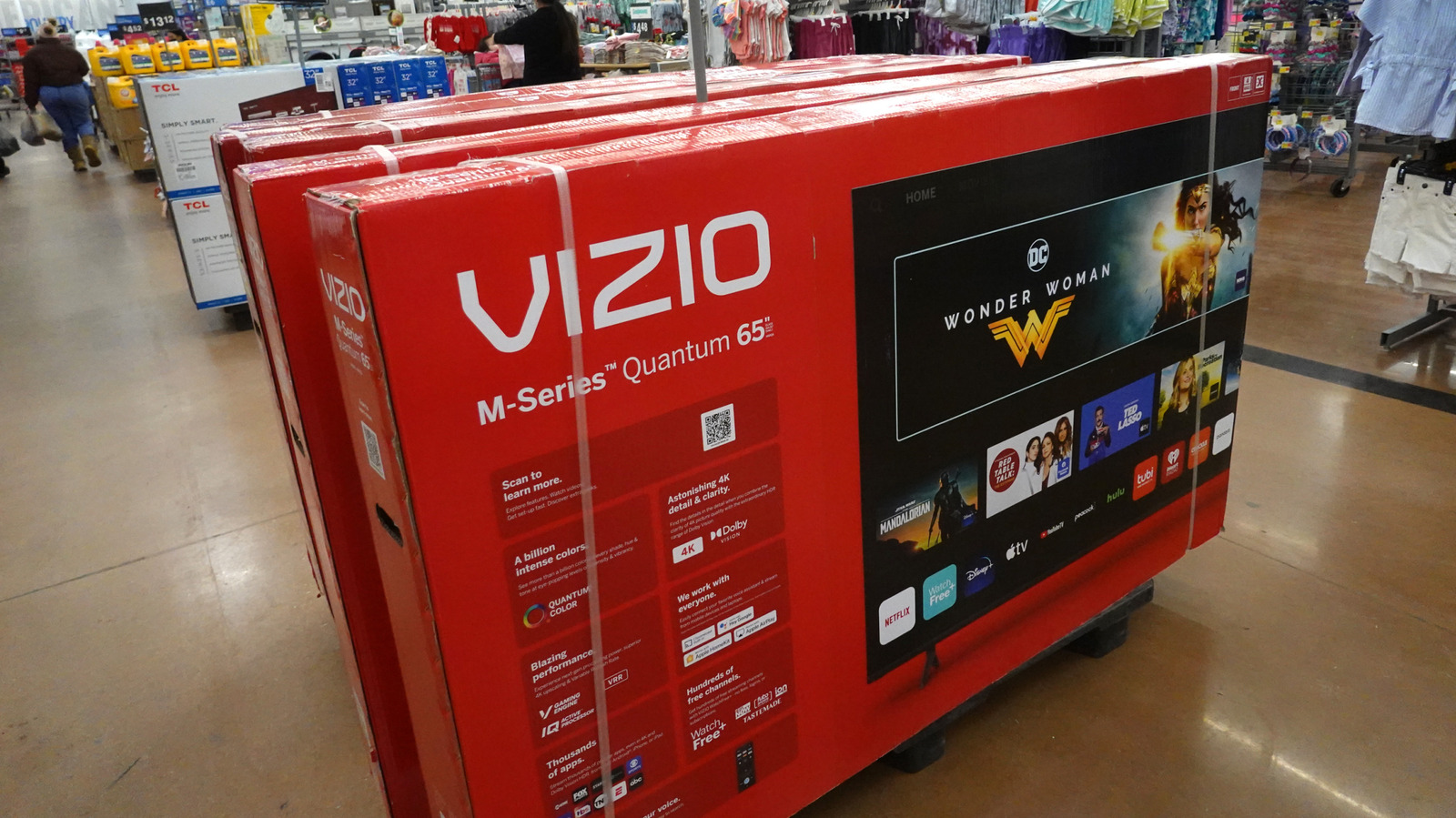Properly outfitted content calendar tools are a must for any marketer, creator, or solopreneur.
It’s not just about juggling multiple social platforms and the different times to post. Your to-do list also has content creation, campaigns, community engagement, and a dozen other moving pieces to keep your brand consistent across channels.
It’s no surprise that 58% of marketers reported feeling burned out.
With so many deadlines and details competing for your attention, a content calendar tool isn’t just helpful, it’s the only way to stay sane.
Content calendar tools ease the pain by centralizing your content schedule and automating tasks. The best tools have features and automations that make your life easier.
Key Takeaways
- Your spreadsheet era is over. If you’re still planning content in Google Sheets, it’s time to level up. Dedicated content calendar tools bring your strategy to life, help you stay organized, and make collaboration way easier.
- Choose tools that fit your workflow — not the other way around. Whether you’re a solo creator or part of a big marketing team, the best tool is the one that actually makes your day smoother.
- Automation is your new best friend. Batch scheduling, AI caption help, and built-in analytics don’t just save time — they keep you consistent and help you post smarter (not harder).
- Content calendars aren’t just for social. They help you manage everything from blogs to email campaigns, so your brand looks and sounds consistent everywhere your audience hangs out.
What are content calendar tools?
Content calendar tools are software that allow you to plan, schedule, manage, and distribute your content across multiple platforms. It helps you stay organized and streamline a flow of content across your blogs, social media accounts, and other marketing channels.
And when you’re competing with a chronically online market, and you need to be at the top of your content game. A Google sheet won’t cut it.
We spoke to Carolina Horna, freelance Creative Director and Brand Strategist, to get some expert advice. She has spent over a decade in the social media trenches and knows her way around a content calendar.
“Using a dedicated tool as opposed to a Google Doc or spreadsheet adds a level of organization and clarity that is hard to achieve without it,” says Horna.
“With a content calendar tool, I’m able to see my strategy come to life, maintain my content pillar distribution, and collaborate easily with my team.”
The best content calendar tools have features like:
- Bulk uploads or batch scheduling to save time
- Suggestions for the best time to publish, send, or post
- Customization options to help you tailor your posts for each platform
- AI-powered content generation
- Hashtag suggestions
- Built-in library assets for images, videos, or templates
- Integrations with other CRMs for smooth workflows
- Intuitive mobile apps so you can work from anywhere
Content calendars differ from social media calendars by focusing on all content and platforms. This includes email, blogs, and social media. It’s a little like an editorial calendar. While a social media calendar only focuses on social media posts and platforms.
If you need help specifically scheduling social media posts, try these social media scheduling tools.
#1 Social Media Tool
Create. Schedule. Publish. Engage. Measure. Win.
Free 30-Day Trial
Key features of content calendar tools
When you’re sizing up content calendar tools, it’s not just about posting on time, it’s about how much smoother they can make your whole workflow.
“Within the content calendar tool I use, you’re able to toggle between different views (ie, spreadsheet, calendar, kanban, etc.),” says Horna. “This helps me manage my team’s time effectively since I can create a view that suits their involvement in my project. They never need to see or sift through content that doesn’t apply to them. “
Here are the key features to look for if you want to get the most value out of your tool of choice:
- Visual planning
- Scheduling and publishing
- Collaboration and approvals
- Analytics and performance tracking
- Overview of how to get the most value
- Drag-and-drop interfaces for easy scheduling
- Centralized management of multiple brand accounts across regions or sub-brands
- Shared asset libraries tied to brand guidelines (logos, tone of voice, templates)
- Governance controls to prevent off-brand posting and role-based permissions to control who can draft, edit, or publish.
- Approval workflows with version history and comments
- Asset management to store brand-approved images, logos, and videos
- Automated reporting dashboards that track specific KPIs
- Export options to share calendars or performance reports with stakeholders
When it comes to choosing a tool based on its features, think of what you and your team may need on a daily basis.
“In my content calendar tool, I’ve created sections in my content forms that correspond to copywriting and design requirements,” says Horna.
“These are then filtered into separate spreadsheets for copywriters and designers to see tasks and revisions. It’s a game-changer because team members only have to go to one place to see which content needs their expertise.”
If you’re still unsure, trying out different tools and seeing what they offer is always helpful.
Free trials can be a game-changer for finding the right one.
“Get your hands dirty and try out as many features as the tool has available,” says Horna. “If your tool offers free templates, explore how some of those setups could improve your own template and workflow.”
What are the best content calendar tools in 2025?
The best content calendar tools are the ones that make your work easier with the features and integrations you need.
Choosing the right content calendar tool can feel overwhelming, with so many apps and platforms out there. But we’ve got your back. We’ve created an easy-to-skim table and list of the top 15 content calendar tools in 2025.
| Tool | Best for | Key features | Pros | Cons | Pricing (as of 2025) |
|---|---|---|---|---|---|
| Hootsuite | Enterprise and all-in-one social media teams | Social media calendar, scheduling, analytics, approvals, AI-powered tools | Scales for teams, integrations, powerful reporting | Higher cost than basic tools | Starts at $99/mo |
| Asana | Mid-to-large marketing teams | Project + workflow management, calendar view, task assignments | Great for collaboration, scalable workflows | Less specialized for content marketing | Free–$24/mo |
| Notion | Flexible individual or team setups | Customizable databases, calendar view, note-taking | Highly customizable, affordable | Requires setup, lacks automation | Free–$10/mo |
| Small marketing teams, creators, solopreneurs | Visual content calendar, media library, preview for grid & feed, hashtag suggestions | Intuitive visual planning, drag-and-drop calendar | Weaker analytics or advanced workflows vs full suites | $18.75 – $82.50/mo | |
| Buffer | Solopreneurs and small marketing teams | Scheduling, basic analytics, reuse options, browser extensions, content queueing | Clean interface, easy to use, low learning curve | Limited reporting, limited collaboration in lower tiers | Free – $10/mo |
| Airtable | Mid to large marketing teams | Spreadsheets + database hybrid, multiple views, automations, linked records | Flexible data modelling, useful for content planning & asset management | Doesn’t natively publish to social | $20/mo per seat |
| Sprinklr | Enterprise-level organizations | Publishing, engagement, listening, advertising, analytics, governance, omnichannel messaging | Enterprise-grade features, strong compliance/permissions | Very expensive; steep learning curve | Not publicly listed (seats likely start at ~$299/mo) |
| Canva Pro | Solopreneurs, small marketing teams, freelancers | Design templates, brand kits, content planner, team collaboration | Strong for graphics, huge template library, intuitive | Scheduling is basic; not a full social suite | $19/mo |
| HubSpot | Mid to enterprise marketing teams, B2B orgs | Social publishing, CRM integration, email campaigns, automation, analytics | Unified marketing + sales view, strong automation | Expensive; social features sometimes secondary | Free – $4,700/mo |
| Monday | Mid to large marketing teams | Boards, automations, dependencies, integrations, dashboards, forms | Flexible for structuring content workflows; good as a central hub | Not a dedicated social scheduler; requires integrations | Free – $26/mo |
| Trello | Solopreneurs and small marketing teams | Boards, lists, cards, checklists, labels, power-ups | Intuitive; great for campaign ideation and lightweight planning | Lacks native social features; can get messy with scale | Free – $17.50/mo |
| KAWO | Enterprise & mid-size companies targeting Chinese social platforms | Publishing to Chinese platforms, content calendar, analytics for Chinese networks | Niche specialist for China; bridges gap for Western tools | Less utility outside Chinese platforms; limited global use | Starts at $4,000/year |
| MeetEdgar | Solopreneurs and very small teams | Evergreen queues, content library, posting automation, variations generation | Keeps profiles active with minimal effort; strong re-use | Weaker analytics, limited collaboration | $499/year |
| Post Planner | Small teams or solopreneurs needing curated content + scheduling | Content suggestions & curation, scheduling, category queues, analytics | Helps with ideation; decent hands-off scheduling | Analytics & collaboration are basic; media features may lag | Free – $79/mo |
| Mailchimp | Mid to enterprise teams | Email marketing integration with social scheduling | Impressive email features; good for teams wanting email + social | Social scheduling limited; pricing scales quickly | Free trial, then $27.85/mo |
Hootsuite
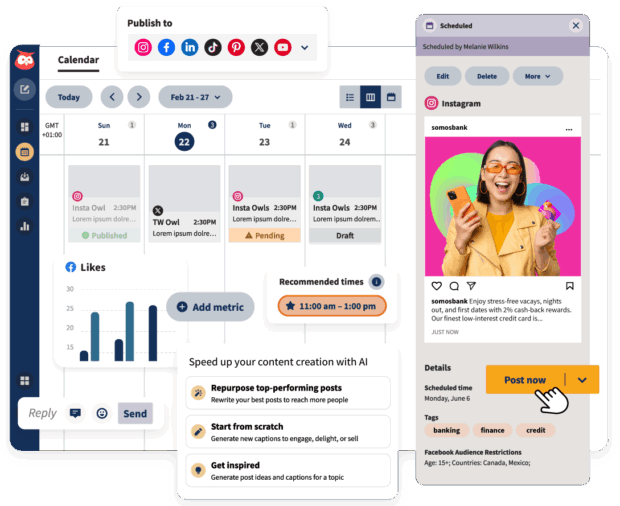
Hootsuite isn’t just our top pick because this article is published on the Hootsuite blog. Hootsuite also has (well-documented) benefits for social media teams. Notably, having all of your different social media channels and accounts on one platform. It makes executing your social media campaigns a breeze.
With Hootsuite, you’ll have an at-a-glance social media content calendar with all of your accounts in one place. You can drag-and-drop to organize scheduled posts, bulk schedule posts, and export your calendar. Your schedule will be updated in real-time.
Plus, it’s got automation built right into it, making it a superpowered social media content planner.
The AI-powered features (like OwlyGPT), content library, and integrations (like Canva) give your team a healthy assist when it comes to creating content in the platform. You can see the best time to post according to data from your followers.
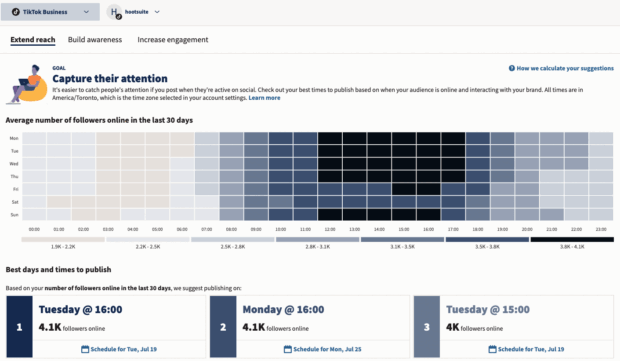
You can assign approvals to certain team members and restrict other team members’ access, depending on their role. Workflows are pretty intuitive, so your team can create, schedule, approve, and publish posts without any bumps.
You’ve also got access to enterprise-level analytics tools that’ll help you optimize your social media strategy.
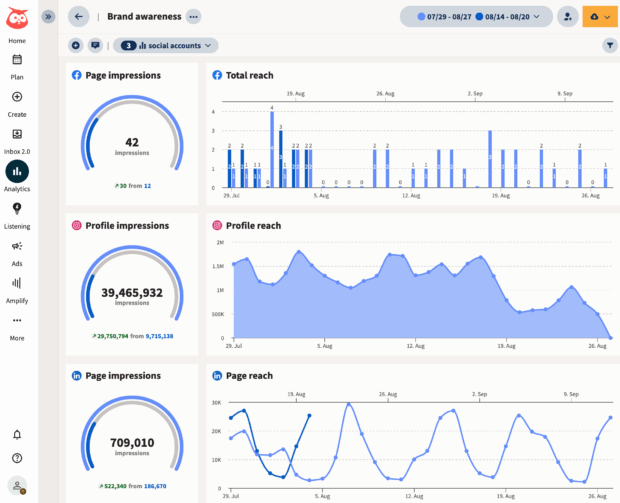
But don’t take our word on it alone. Hear from Witness Change on how switching to Hootsuite dramatically reduced their time spent scheduling and updating posts. Functionality like our all-in-one platform, where creation, scheduling, and publishing all take place on a single calendar, sure helped.
Or read how Stocksy had their best month ever using Hootsuite. “We’re using all the features of the platform,” says Christina Minshull, Stocksy’s Head of Marketing.
“We’re publishing and scheduling, we use it for approval systems and crisis management, we use the content library to help with efficiency, tagging to make meaningful decisions, and use the listening platform to see what our audience is talking about and see where content gaps exist.”
Best for: Teams or midsize to enterprise brands that need an all-in-one social dashboard.
Top features:
- Multi-social media platform posting and scheduling
- Unified inbox
- Lets you connect and manage dozens of brand accounts from a single dashboard
- Analytics and custom reporting
- Social listening (psst: check out these top social listening tools for your brand)
- AI-powered features like OwlyGPT
- Workflows and approval processes capabilities
Pros:
Cons:
- Steep price jump for more advanced tiers
- Complexity not necessary for smaller operations
- Not the cheapest on the market
Pricing: Free 30-day trial, paid plans are from $99/mo – $249/mo
Asana

Source: Asana
Best for: Mid-to-large marketing teams who also need project management tools, content planning workflows, and cross-team coordination.
Top features:
- Task boards and timelines visually laid out
- Custom fields available
- Can assign tasks assignments
- Communication via comment threads
- Integrations
Pros:
- Flexible
- Works for non-social work, like pipelines and project management
Cons:
- Not built specifically for social media
- Lacks native posting
- Lacks analytics
- Lacks social-specific features
Pricing: Starter plans are free, paid plans are $14.49/mo – $32.99/mo, and enterprise-level plans are available at request.
Notion
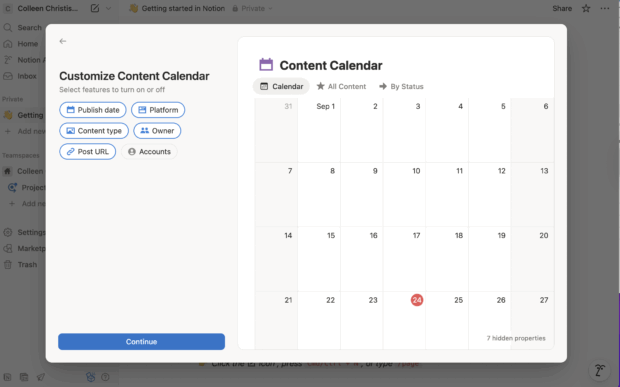
Source: Notion
Best for: Flexible individuals or teams who need to do lightweight content planning, knowledge bases, and hybrid editorial workflows.
Top features:
- Templates
- Relational databases
- Kanban or board views
- Embedded content
- Linking pages
- Collaborative editing
Pros:
- A very customizable, flexible structure
- Works for many use cases beyond social
- AI-powered assistance and content generation
- Easy to communicate in-platform using comments
Cons:
- Not specifically meant for social so no built-in scheduling or publishing
- No social-specific AI-features
- No data or analytics imported from social platforms
- No social reporting
Pricing: Starter plans are free, paid plans are $10/mo – $20/mo, and enterprise-level plans are available at request.
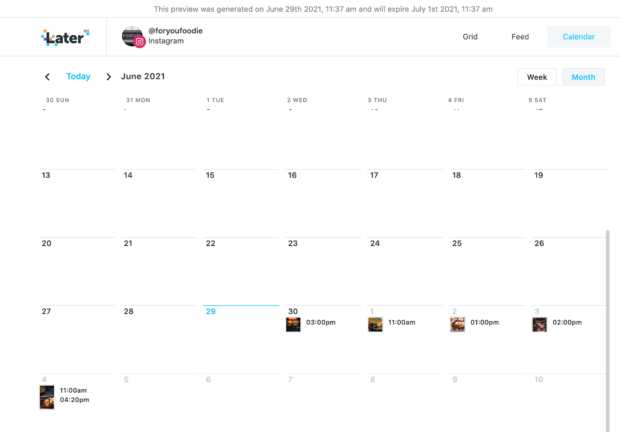
Source:
Best for: Small marketing teams, creators, solopreneurs who work in especially visual brands like fashion, food or lifestyle.
Top features:
- Visual content calendar
- Media library
- Preview for grids and feeds
- Hashtag suggestions
Pros:
- Intuitive visual planning
- Visual posting schedule
- Drag-and-drop calendar makes it easy to organize
- Good for content-first creators who need to see what their posts look like
Cons:
- Limited analytics
- Lacking in workflow capabilities
Pricing: Plans start at $18.75/mo – $82.50/mo
Buffer
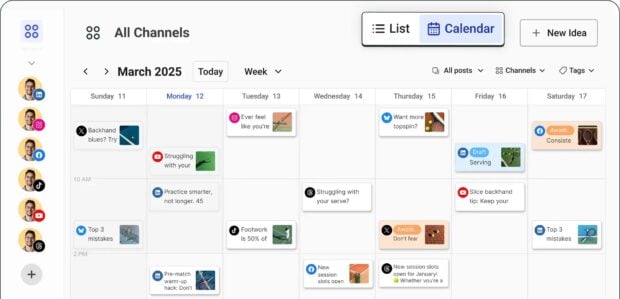
Source: Buffer
Best for: Solopreneurs and small marketing teams looking for a starter tool that prioritizes simplicity and affordability.
Top features:
- Scheduling
- Basic analytics
- Reuse options
- Browser extensions
- Content queueing
Pros:
- Free features
- Clean interface
- Easy to use
- Lower learning curve
Cons:
- Limited reporting
- Limited collaboration features in lower tiers
- Lacking in-depth social media features
Pricing: Free plans with paid starting at $5/mo – $10/mo
Airtable
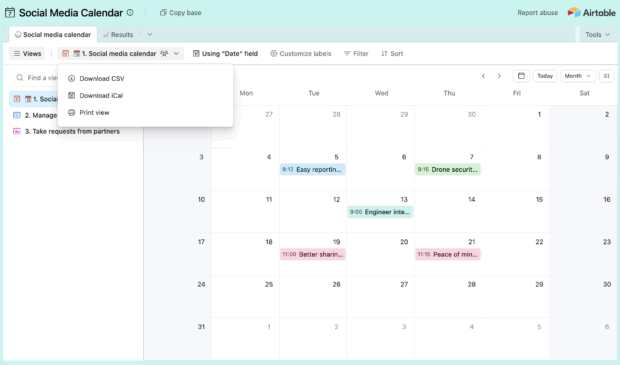
Source: Airtable
Best for: Mid to large marketing teams that want customizable content databases and can maintain the system.
Top features:
- Spreadsheets and database hybrid
- Multiple view options like grids, galleries, calendars
- Automations
- Linked records
- Customization
- Template library
- AI-powered generation capabilities
- App library and sandbox
Pros:
- Flexible data modelling
- Useful for content planning and asset management
- Plenty of content calendar templates available
Cons:
- Doesn’t natively publish to social
- Is not a social-specific platform, so lacking social features
Pricing: Free, with paid plans starting at $20/mo – $45/mo. Enterprise plans available upon request.
Sprinklr
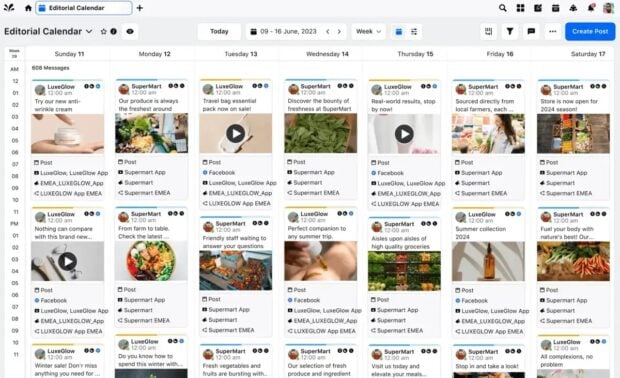
Source: Sprinklr
Best for: Enterprise-level organizations that need to manage multiple consumer touch points across multiple channels.
Top features:
- Social publishing
- Engagement
- Social listening
- Advertising
- Comprehensive analytics
- Strong governance lets global companies manage sub-brands with regional permissions and approval workflows
- Omnichannel messaging
Pros:
- Enterprise-grade features
- Strong compliance and permissions
- Cross-channel depth
Cons:
- Very expensive
- Steep learning curve
Pricing: While Sprinklr does not list public prices for most of its products, they do offer a Self-Serve plan for smaller teams for around $299-$359/mo
Canva Pro
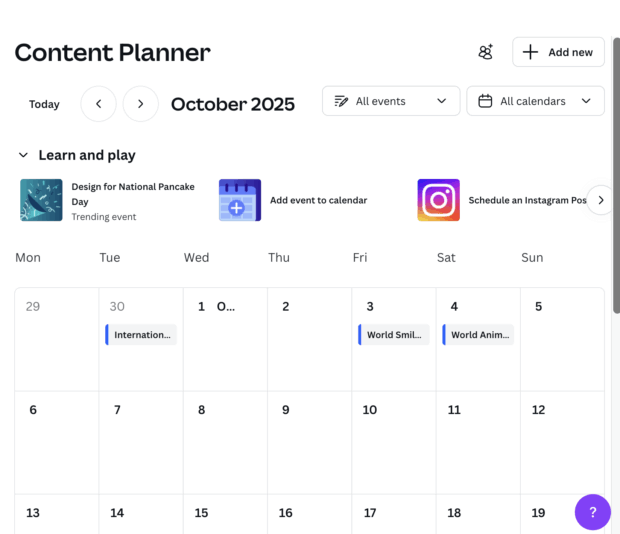
Source: Canva Pro
Best for: Solopreneurs, small marketing teams, freelancers who need support with design.
Top features:
- Premium stock content
- Design templates
- Brand kits
- Content planner for scheduling simple posts
- Team collaboration
Pros:
- Strong for graphics and social images
- Huge template library
- Intuitive design for non-designers
Cons:
- Scheduling is basic
- Not a full social media management suite
- No analytics
Pricing: Pro plans start at $19/mo per seat
Hubspot
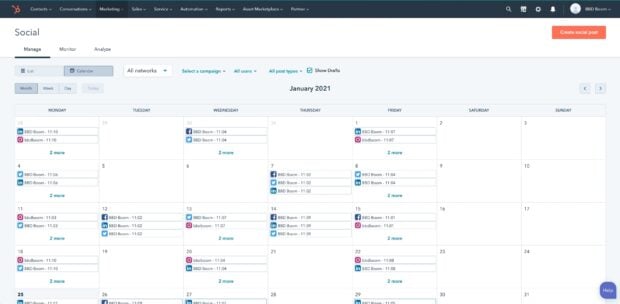
Source: Hubspot
Best for: Mid to enterprise marketing teams, B2B organizations that already use HubSpot CRM and want everything in one ecosystem.
Top features:
- Social publishing
- CRM integration
- Linked email campaigns
- Automation
- Analytics and lead tracking
Pros:
- Unified marketing and sales view
- Strong automation
- Useful for tying together brand communications across email, CRM, and social
Cons:
- Social features are lacking
Pricing: Free, with paid accounts ranging from very basic at $15/mo to professional starting at $1,450/mo and enterprise starting at $4,700/mo
Monday

Source: Monday
Best for: Mid to large marketing teams managing multiple workflows and executing campaigns across multiple departments who need an organization tool.
Top features:
- Boards
- Forms
- Dashboards
- Integrates well with other platforms
Pros:
- Very flexible for structuring your content workflows
- Works well as a central hub for multiple marketing campaigns across different platforms and teams to stay organized
Cons:
- Not a dedicated social scheduler or publisher tool
- Requires integrations to push posts
Pricing:
- Free to start, paid plans start at $26/mo per seat with enterprise plans available at request.
Trello
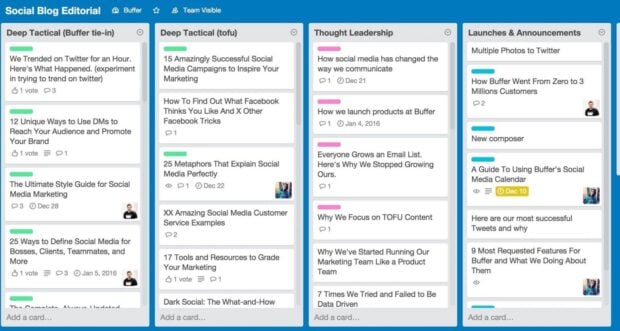
Source: Hevo
Best for: Solopreneurs and small marketing teams who need simple visual planning and a low barrier to entry.
Top features:
- Simple editorial boards
- Content idea pipelines
- Visual task tracking
- Templates
Pros:
- Intuitive
- Great for planning
Cons:
- Lacks social features like publishing
- Scaling can get messy
Pricing: Free with paid plans starting at $5/mo – $17.50/mo
KAWO

Source: KAWO
Best for: Enterprise and mid-size companies targeting Chinese social platforms like WeChat, Weibo, Douyin.
Top features:
- Social publishing to Chinese platforms
- Organized content calendar
- Analytics focused on Chinese social networks
Pros:
- Specific to social media marketing
- Great if you’re focused on Chinese apps
- Bridges gaps where Western tools don’t reach
Cons:
Pricing: While pricing isn’t publicly available, you can expect KAWO plans to range from $4,000 to $29,600/year
MeetEdgar
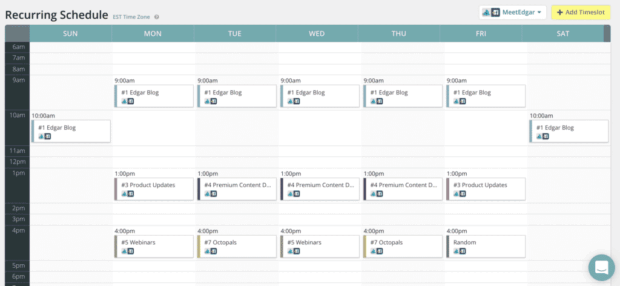
Source: MeetEdgar
Best for: Solopreneurs or very small teams who want “set it and forget it” evergreen scheduling.
Top features:
- Automated evergreen content queues
- Content library
- Posting automation
Pros:
- Minimal effort to keep your profile active
- Automatically reposts evergreen content
Cons:
- Automated reposting has strategic pitfalls
- Limited collaboration
- Narrow social feature set
Pricing: Free trial, paid plans start at $29.99 – $49.99/mo
Post Planner
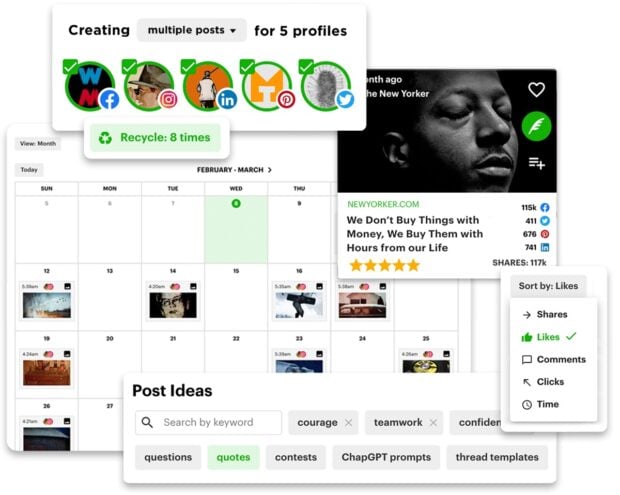
Source: Post Planner
Best for: Small marketing teams or solopreneurs needing curated content ideas and scheduling.
Top features:
- Content suggestions pulled from various sources
- Content curation
- Scheduling
- Wide suite of platforms to post to
- Category queues
Pros:
- Helps with ideation and finding trending content
- Hands-off scheduling
Cons:
- Basic analytics
- Limited collaboration
- media library and advanced features may lag
Pricing: Free with paid plans at $7 – $57/mo
Mailchimp
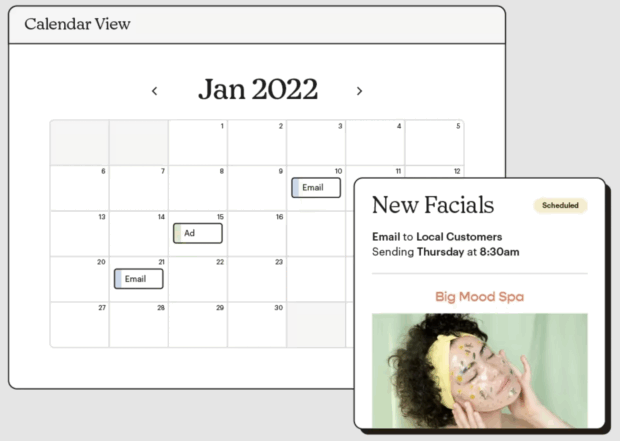
Source: Mailchimp
Best for: Mid to enterprise teams focused on email marketing that want everything in one place.
Top features:
- Robust email marketing features and automations
- Generative AI features
- Audience segmentation within email lists
- Popups, landing pages, and other digital touchpoints
Pros:
- Scheduling capabilities for social posts to align with email campaigns
- Personalized onboarding
- Build social posts in the same place you build emails
- Robust email marketing features
Cons:
- Not social-specific
- Features are largely focused on email marketing
Pricing: Free 14-day trial, then plans scale up according to list size: 500 contacts $27.85/mo – 100,000 contacts $946.74/mo
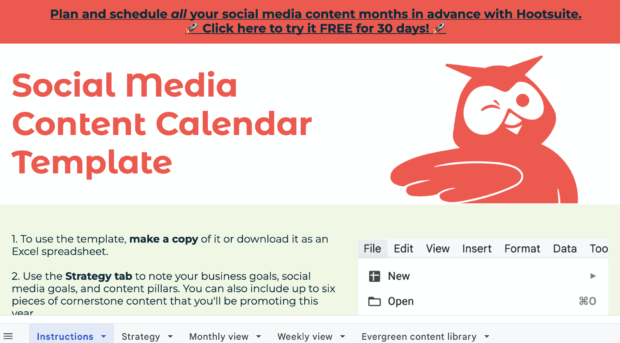
Content calendar tools FAQ
What is a content calendar tool?
A content calendar tool is a piece of software that allows you to plan and schedule content across multiple platforms.
What is the best content calendar tool?
Hootsuite is the best content calendar tool, in our humble opinion.
Do small businesses need content calendar tools?
Absolutely, small businesses need to prioritize and maximize their time and effort, and content calendar tools are a great way to save time.
What’s the difference between a content calendar and a social media calendar?
A content calendar focuses on all content and platforms—including email, blogs, and social media—and a social media calendar focuses on social media posts and platforms.
How do I create a content calendar?
You can create a content calendar through intuitive tools like Hootsuite.
Is there a free content scheduler?
Yes, there are many free content schedulers, but you typically pay for what you get.
Does Canva have a content scheduler?
Yes, Canva Pro has a content scheduler that you can upload your designed posts directly into.
Can you build a content calendar in Excel?
Yes, you can build a content calendar in Excel, but it’ll be painful. There are easier tools out there that will publish your content directly to your socials.
What are the best free content calendar tools?
Hootsuite offers a free 30-day trial, and smaller tools like Buffer offer free starter plans.
How do large teams use content calendar tools?
Large teams use content calendar tools that support inter-platform communication, workflows, and approvals.
Save time managing your social media presence with Hootsuite. Publish and schedule posts, find relevant conversions, engage your audience, measure results, and more — all from one dashboard. Try it free today.







